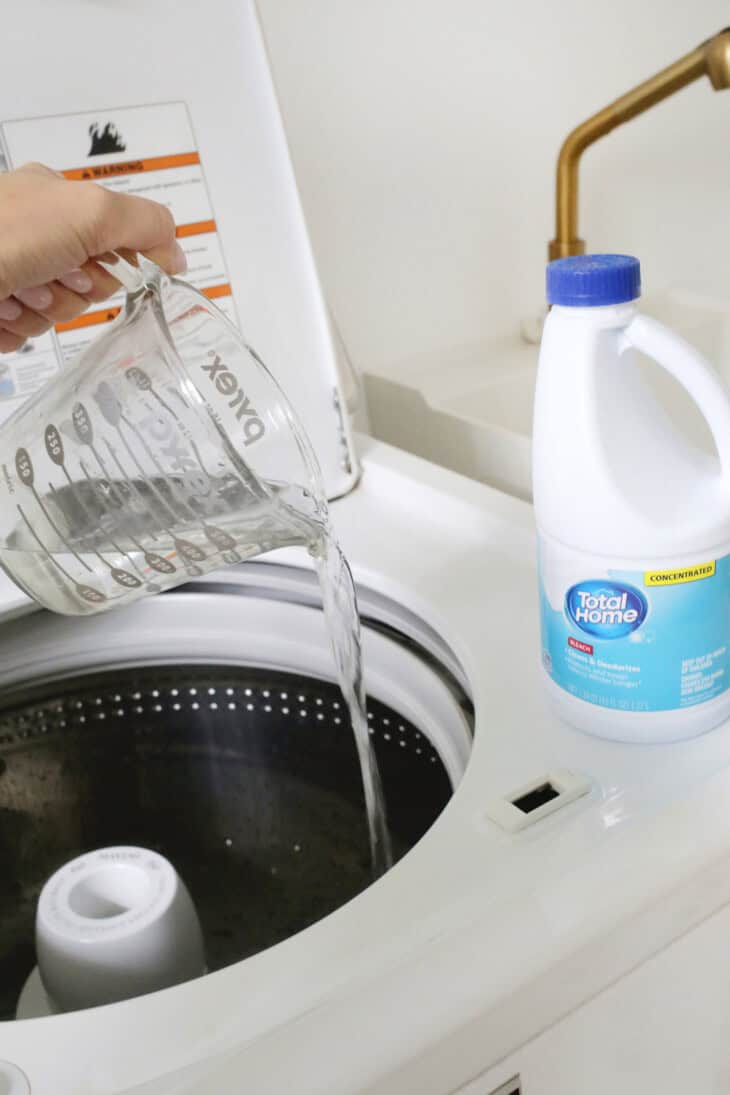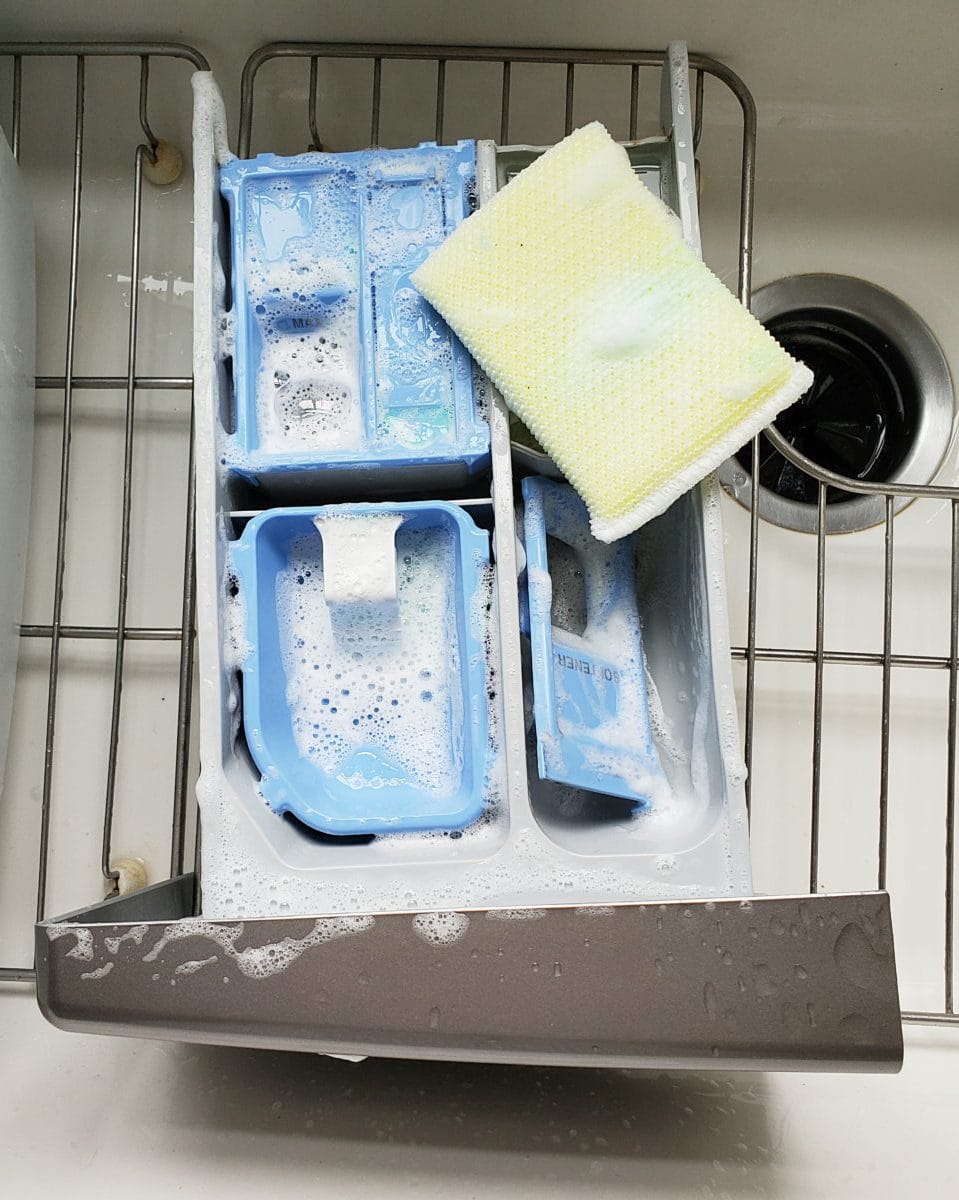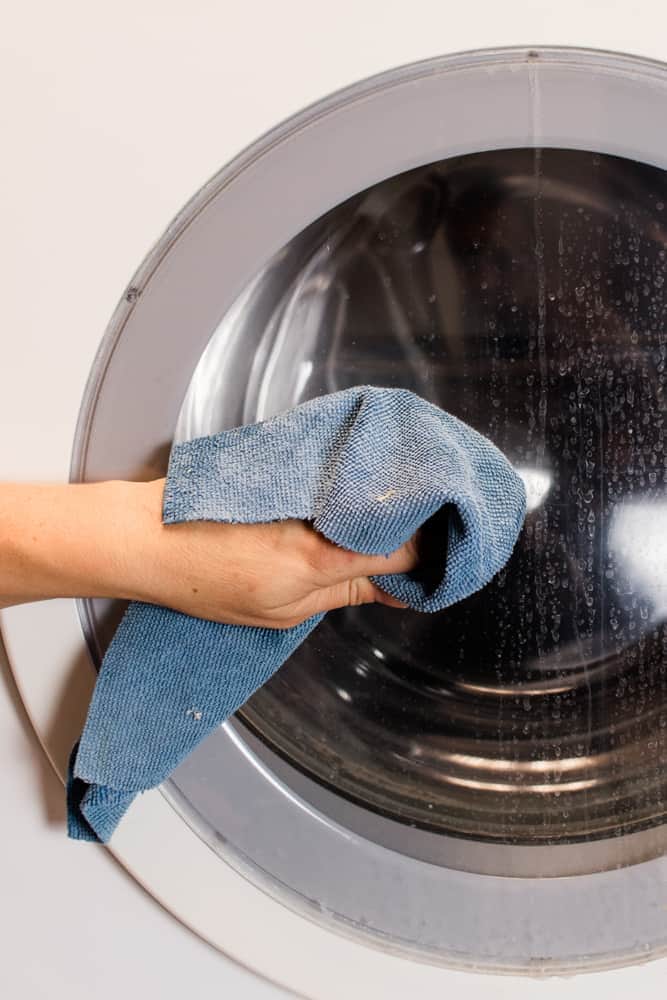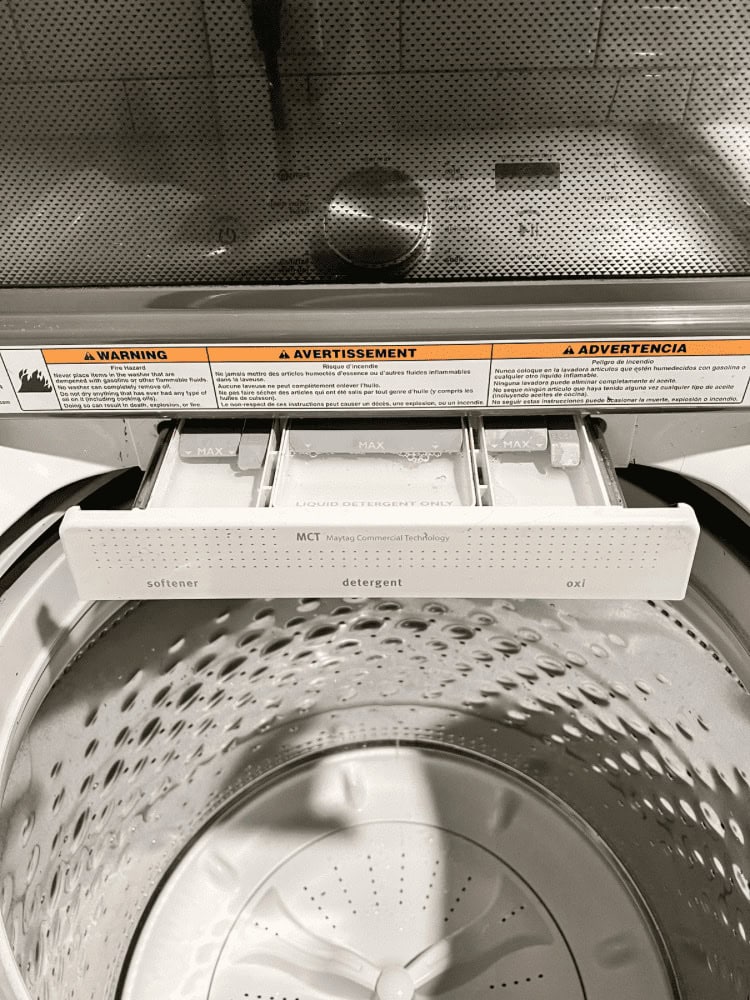Learning how to deep clean your washing machine matters when clothes start smelling off or come out less fresh than they should after a wash.
You expect the washer to clean your clothes properly, not leave behind musty odors or damp towels that still feel dirty after every load.
Detergent, softener, and dirt slowly build up inside your machine, especially in hard-to-reach spots like the hoses, gaskets, and under the drum.
If you see grime around the lid, smell odd odors, or find gray streaks on clothes, your washer needs more than a rinse.
Most people throw in a freshener tab and walk away, but that only hides the smell without fixing the buildup inside the machine.
The real mess usually hides in the drum, seals, and hose lines where normal cycles can’t scrub or reach to clean effectively.
This buildup causes more than just bad smells because it forces your washer to work harder and shortens the machine’s working life.
This post may contain affiliate links. As an Amazon Associate and a participant in other affiliate programs, I earn a commission on qualifying purchases at no additional cost to you.

It feels frustrating to run the wash twice or waste water because your clothes still feel dirty even after a full cycle.
A proper deep clean removes the hidden grime and helps your washer run efficiently, so your clothes come out smelling fresh.
Once your washer is clean again, laundry day feels easier, faster, and more satisfying from the moment you open the lid.
Why You Should Deep Clean Your Washing Machine
Even the cleanest home can have a smelly washer if you forget to clean the machine that handles dirt day after day.
Soap buildup, hard water deposits, and trapped lint all add up over time and slow down how well your washer works.
You might notice mold around the rubber seal, buildup in the detergent drawer, or just that sour smell from a closed lid.
Ignoring those signs can lead to bigger problems like leaks, clogs, or even damaged clothes and higher energy bills over time.
Clean machines run better, save you money, and extend the life of both the washer and the clothes it washes.
It’s frustrating when you do a load of laundry, and everything still smells like mildew or doesn’t rinse clean.
Keeping your washer fresh makes your whole laundry room feel cleaner, neater, and more pleasant to use.
Deep cleaning once a month can prevent smells, keep your cycles working well, and stop grime from building up again.
If you’ve been avoiding it, now is the perfect time to start a simple routine that fits into your schedule.
Once you deep clean your washing machine, you’ll notice a big difference in how fresh your clothes feel and smell.
More Home Organization Ideas + Inspiration
What You’ll Need To Deep Clean Your Washing Machine
Before getting started, gather a few simple items that work well for cleaning both the inside and outside of your washing machine.
These items help remove buildup, kill bacteria, and keep your washer running like it should without causing damage to parts or surfaces.
Using the right tools makes the job easier and helps prevent future problems like odors, mildew, or stuck-on detergent grime.
- Toothpick or cotton swab (for crevices)
- Distilled white vinegar
- Baking soda
- Old toothbrush or small scrub brush
- Microfiber cloth or sponge
- Measuring cup
- Small bowl
- Spray bottle
- Rubber gloves
Tap Photos To Shop
How To Deep Clean a Top-Loading Washing Machine
Cleaning a top-loading washer takes some time and elbow grease, but it truly improves how fresh your laundry smells and how well the machine runs.
Start by filling the drum with hot water using the longest and largest cycle to help loosen grime and break down soap scum inside.
Pour in four cups of white vinegar, let the cycle agitate briefly for a minute, then stop it and allow the mixture to soak.
While the vinegar works, wipe down the lid, control panel, and exterior with a damp cloth soaked in vinegar to remove dirt and buildup.
Use a toothbrush dipped in vinegar to scrub inside the softener dispenser and around the agitator where grime usually hides and collects.
After one hour, restart the washer and let it complete the cycle so all the loosened residue gets rinsed out of the tub.
Next, sprinkle one cup of baking soda directly into the drum and run another full hot cycle to eliminate odors and clean leftover residue.
Would you like to save this post?
Remove detachable pieces such as the bleach cup or softener tray and wash them in warm, soapy water to remove sticky buildup.
Use a toothpick or cotton swab to clean narrow spaces around knobs, buttons, and edges where dirt gathers and often goes unnoticed.
Once finished, leave the washer lid open to let the drum dry completely and stop moisture from causing mold or mildew to form.
Deep clean your top-loading washer monthly to help it run better, prevent smells, and keep your laundry feeling fresh after every wash.

How To Deep Clean a Front-Loading Washing Machine
Front-loading washers tend to trap more moisture, so regular deep cleaning is key to stopping odors, grime, and mold from building up inside the machine.
Start by mixing equal parts vinegar and water in a spray bottle and spraying the rubber door seal generously to loosen dirt and mildew.
Wipe the entire seal with a cloth and use a toothbrush to scrub deep into folds where mold often hides and smells begin.
Pour two cups of vinegar directly into the detergent tray and another two cups into the drum before running a hot wash cycle completely.
Let the full cycle finish so the vinegar can break down soap scum, remove odors, and clean the interior without using strong chemicals.
Next, sprinkle half a cup of baking soda straight into the drum and run a second hot rinse cycle to neutralize any lingering smells.
Take out the detergent tray, soak it in warm soapy water, and use a toothbrush to scrub off residue and gunk that builds up.
Dry the tray with a towel and wipe down the space where it sits before placing it back into the washer.
Wipe the inside of the drum, the door, and outside surfaces using a clean cloth to remove dust and leftover cleaner.
Always leave the washer door open after cleaning to help air it out and keep mildew or mold from growing again.
Doing a deep clean once a month keeps your front-loading washer running smoother and helps your laundry come out fresh every single time.

Best Tips To Keep Your Washing Machine Clean Between Deep Cleans
Small steps between deep cleans make a big difference in keeping your washer fresh, working smoothly, and lasting longer through everyday use.
Always leave the washer lid or door open after every load so moisture can dry out fully and mildew has no chance to grow.
Remove wet clothes from the drum immediately after the cycle finishes to prevent trapped humidity and unpleasant musty smells from forming inside.
Use the correct amount of detergent based on your washer type and water hardness, as too much can cause residue and extra buildup.
Wipe the rubber seal, inside the lid, and door glass with a dry cloth weekly to prevent mold from growing in damp areas.
Take out and clean the detergent drawer monthly to stop leftover soap, softener, and powder from clogging or sticking inside the compartment.
Run a full hot cycle with one cup of vinegar every month to flush out gunk, kill bacteria, and keep your washer smelling fresh.
If you regularly use fabric softener, clean more often because it leaves behind thick residue that builds up faster inside your washer’s parts.
Wipe down the exterior, including control buttons and lid edges, since these spots collect grime and dust during daily use.
Check and clean the drain pump trap or filter if your washer has one, following instructions from the user manual for safety and access.
Place an open dish of baking soda inside the drum between loads to absorb moisture and odors, helping your washer stay fresh every day.

Frequently Asked Questions
It’s best to clean your washing machine deep every three months to stop grime, mildew, and smells from building up inside the drum. If your clothes come out with odors or the washer smells musty, it’s time to clean it again, even if it’s been less than the recommended time.
White vinegar and baking soda are safe, affordable, and effective for removing buildup and killing odors without damaging any parts of your machine. They clean deep inside the washer, tackling mildew, detergent scum, and musty smells that regular cycles can’t reach.
Yes, bleach can disinfect your washer, especially during deep cleans when you want to kill bacteria and mold inside the drum. Never mix bleach with vinegar or other cleaners, as this creates harmful fumes and can damage your machine over time.
Remove the drawer completely, soak it in hot, soapy water, and scrub all corners using a toothbrush to remove stuck-on residue. Rinse it well, dry it fully with a towel, and wipe down the space where it slides in before putting it back.
You can mix them, but it’s more effective to use them in separate cycles so each cleaner can work properly without creating excess foam. Start with vinegar for soaking and disinfecting, then follow with baking soda to scrub, deodorize, and lift away any remaining residue.

It’s easier than most people think to learn how to clean a washing machine and keep it working smoothly through every season of the year.
Knowing how to deep clean your washing machine helps prevent bad smells, stubborn buildup, and performance issues that make laundry day harder than it should be.
A clean washer gives peace of mind, making sure your clothes come out fresh and truly clean without leftover soap, grime, or hidden dirt.
You can also add a few simple touches like floating shelves, wire baskets, or a small plant to make the space feel inviting.
Taking time to clean and decorate your laundry area turns an ordinary task into something more enjoyable, satisfying, and easier to keep up with.












